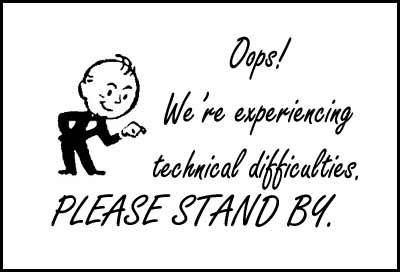With every webpage loaded, email sent, or video streamed, network traffic takes a complex journey…
Understanding when the problem isn’t the provider. It’s you.
Most APM tools are for apps you build. If you are a cloud service provider or an e-commerce site, your business depends on customers having a good experience interacting with your site or app. Expectations are high. Slow is the new down, and if your site doesn’t perform well you will lose business to your competitors. APM tools like New Relic, AppDynamics, and others give you insight into the user experience and performance of the apps you build and manage.
 But what about for the apps you buy? Your employees can’t live without them to do their jobs and run your business. For these apps too – slow or down can have an equally significant impact. Either way it costs the business money, and when that happens it doesn’t matter whose fault it is, it needs to get fixed ASAP.
But what about for the apps you buy? Your employees can’t live without them to do their jobs and run your business. For these apps too – slow or down can have an equally significant impact. Either way it costs the business money, and when that happens it doesn’t matter whose fault it is, it needs to get fixed ASAP.
More and more organizations are moving their IT portfolio into the cloud; not just to save money, but to be more agile and reduce the time they spend doing low-value tasks like standing up servers and installing/updating 3rd party software. Today you can run your business on Software as a Service (SaaS) –solutions for CRM (e.g. Salesforce and Dynamics), ERP (e.g. Netsuite), HR (e.g. Workday), Storage (e.g. Box and Dropbox), and Communication & Collaboration (e.g. Office 365 and Google Apps) – these apps and many more give you all you need for your employees to get work done, delight your customers, and make your business successful.
The problem is that for IT professionals like you there’s an enormous blind spot in the cloud. Traditional APM doesn’t work for the cloud apps you buy. Maybe you don’t think you need performance monitoring for these apps. The providers take care of that, right? And many of them guarantee it with financially backed SLAs. Why worry? If there’s a problem, you’ll just log a support ticket with Microsoft, or Salesforce, or Google.
Not so fast. I might surprise you to learn that 9 out of 10 times when a customer calls the provider complaining of slow performance or an “outage” the problem ISN’T at the provider. So the customer is told,
“It looks good on our end. Must be something outside our network. Sorry, we can’t help you.”
What a rude awakening. But, it shouldn’t be. There are many points of failure in the service delivery chain between your users and the cloud app provider:
• LAN/WAN – Let’s start here. Who’s better at running a reliable network? You or Amazon, or Microsoft, or Google. You have a lot of potential issues in your own network: DNS issues, gateways, proxies and firewalls. Even if your network hasn’t caused issues with your internal apps doesn’t mean the access to the cloud is as reliable as you need it. We routinely see customers who are amazed to find their internal network routing to the cloud is broken or inefficient.
• Proxy/Firewall – Cloud-based apps often need different settings than simple website access. Whether these systems are set-up internally or by your ISP, you can’t simply assume that your SaaS apps will work without some modification of the environment.
• Single Sign-on – You might have pieces of this on premise, or you might have them running in the cloud. Either way, if users can’t sign in they’re not getting into their cloud app. To them, it’s “down.“
• Your ISP – Have a love/hate relationship with your ISP? Everybody does. Problems here are not uncommon – depending on where you are, how you connect to the Internet, and how distant the app provider’s network is. That sales quote in Salesforce, critical document, or invoice from ERP, might pass through 10 or more ISP nodes. If one is losing packets, transactions will fail or be delayed.
• Internet Exchange Points (IXPs) – While outages are rare, the fact of the matter is that your transactions with cloud apps span multiple ISPs connecting through various exchange points. These can and do go down. You’ve heard about “cable fade” on the news “cable cut by work crew under the streets of San Francisco.”
That’s why we created CloudReady. Most problems aren’t cause by your app provider, and when it’s not them – we’ll help you isolate where the problem really is. If it’s you problem, we’ll identify that, so you can do something about it quickly. If it’s another provider, we’ll give you the detailed diagnostics you can share with them to prove it and help them help you faster.
Ultimately, you’re responsible for assuring your users have the best experience getting their jobs done, and it’s your phone that will ring if apps are slow or “down.” With CloudReady you’ll have the ammo you need to keep your SaaS users online and happy, with help from the crowd.


